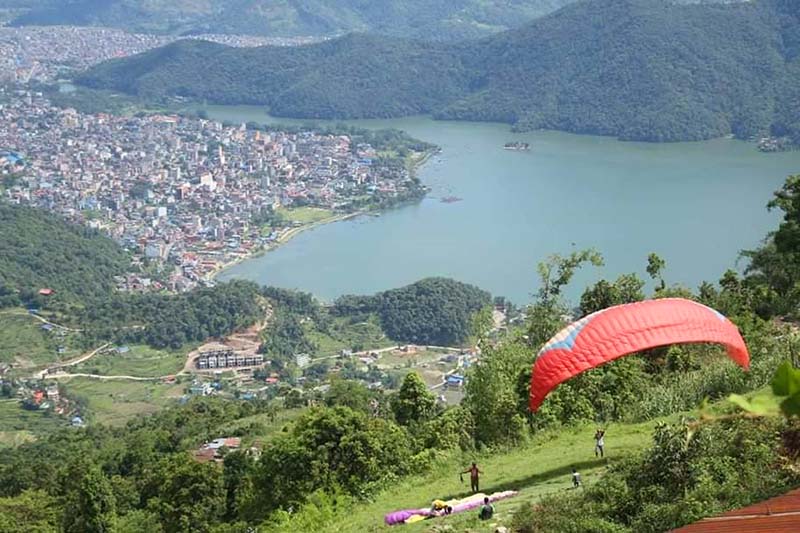

POKHARA: Pokhara, usually vibrant with activity during Dashain, is unusually quiet this year.
Phewa Lake, which typically offers boating, paragliding, and hot-air balloon rides, along with fully booked hotels, has experienced a sharp decline in visitors.
The Gen Z protests in early September deterred both domestic and international tourists, with nearly half of foreign bookings canceled.
Several Nepali tourists who had planned trips also returned home due to ongoing adverse weather conditions.
Officials from the Trekking Agencies Association of Nepal (TAAN) noted that tourism, which had been on the path to recovery, has now been hit even harder by recent events.
“During this time of year, Pokhara usually resembles a bustling festival, but many foreign bookings have been canceled and domestic tourists are absent,” said one hotelier.
During the protests, approximately half a dozen hotels were vandalized and set on fire, and several government offices were destroyed.
September to November is typically the peak season for foreign tourists, but this year, 80% of hotel bookings were canceled, leaving current hotel occupancy at only around 10%, compared to the usual 70–80%.
The Gen Z protests caused physical damages worth Rs 2.5 billion, with long-term consequences expected to be more serious.
Of the total Rs 8 billion invested in Pokhara’s tourism sector, Rs 6 billion is concentrated in hotels.
With over 1,200 tourist-standard hotels operating, hotel operators may consider abandoning the business without government-friendly policies.
The protests, which included curfews and temporary closure of the international airport, projected a negative image of insecurity about Nepal.
“We now need to convey a positive message that Nepal is safe, which will help maintain remaining bookings,” said an official at Nepal Tourism Board.
Activities planned for Pokhara Tourism Year 2025 have also been disrupted.
Although committees were preparing programs, vandalism and insecurity halted progress.
Typically, villages around Pokhara are quieter during Dashain as locals return home. However, this year, the absence of both Nepali and foreign tourists has made the city even more deserted.
Recovery will require cooperation and a trust-building environment among the government, businesses, and local authorities.